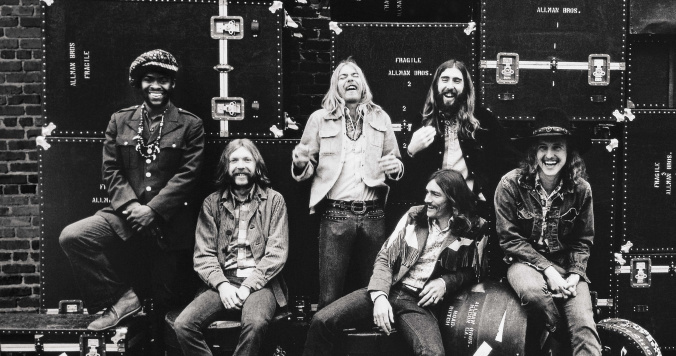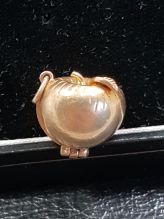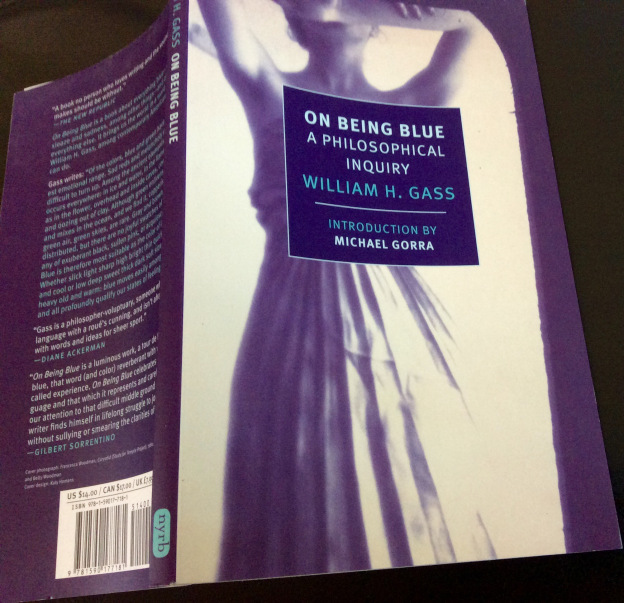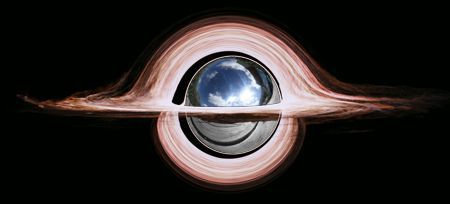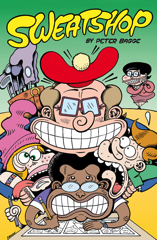
Sweatshop is a workplace situation comedy. While there are only six issues, creator, writer, oftentimes artist Peter Bagge gets in ten stories. The first four issues each have a couple stories. Bagge’s methodical about how he introduces the characters. They’re all comically unlikable, each with a certain charm. If not in the character, then just in how they influence the comic. It’s a great cast.
The comic is about newspaper comic strip cartoonist Mel Bowing and “Sweatshop minions.” Nick, Carrie, Alfred, Millie, and Elliot. Elliot gets hired in the first issue’s second story, everyone else gets their own story somewhere in the first three issues. The fourth issue has an Alfred and Nick team up, before giving Mel his own story. But the fourth issue is also where Bagge, as a writer, is getting comfortable with plotting all these characters together. Before, he utilizes the supporting players for some great jokes, but not really as active participants. The fifth is a single story for the whole cast. The sixth and final issue has a couple stories for Mel.
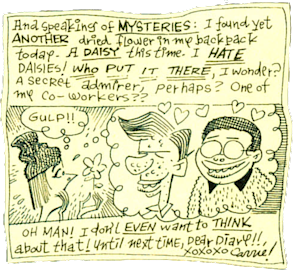 Bill Wray illustrates Carrie’s “Carrie’s Diary” strip.
Bill Wray illustrates Carrie’s “Carrie’s Diary” strip.
Along the way, Bagge and his artists (the series has a number of them) also contribute “samples” from the cast. Carrie’s project, a zine called Carrie’s Diary is the most popular. Alfred dreams of doing superhero comics. Elliot wants to do The Boondocks only desperately obvious and unfunny. Nick wants to make fun of Carrie and Elliot being empathetic and serious. At some point in the series, there’s a sample of everyone’s work, usually Nick’s because Nick is a dick and Bagge gets a lot of mileage out of him. But the Boondocks knock-offs are practically a lecture on how to make a good, politically conscious comic strip and how not to ape one.
Initially, Bagge tries not to embrace the comics culture aspect of Sweatshop too much. The fifth’s issue single story is a trip to a comic con, complete with Bagge being downright tender with some of his observations. The first story is Mel being nominated for a comic strip award, but Bagge doesn’t get too geeky with it. Alfred’s half-issue story is about him trying to be an indie superhero guy and there’s some comic con stuff, but just for background humor. And it’s worth the wait, the comic con story is either the funniest Sweatshop or second funniest. There are even cameos–Ivan Brunetti and Neil Gaiman. It’s awesome.
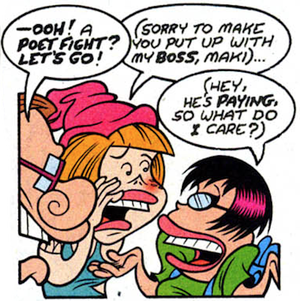 Mel’s become a harmless, hilarious jackass by the fourth issue. Art by Stephanie Gladden and Jim Blanchard.
Mel’s become a harmless, hilarious jackass by the fourth issue. Art by Stephanie Gladden and Jim Blanchard.
The other funniest story contender is the Mel one from the fourth issue. Not because of Mel, but because Bagge’s got this hilarious E plot with Carrie’s friend thinking Mel is hilarious. It forces the reader to take another look at the characters and their behaviors. From the first issue, Sweatshop uses its form and style to occupy a certain space in the reader’s imagination. Bagge and the artists set up the gags on the page and let them play out in the reader’s head. Bagge might not have gone for comic references right off, but from the start the comic has been incorporating tricks from comic strips. It’s about a comic strip, after all, one with zero importance on the plots, which is kind of funny in itself.
Another thing Bagge does is try to bleed readers. The first issue thrusts Alfred and Elliot into an uncomfortable situation with old white guy racist Mel. It’s immediately following Elliot getting out of an uncomfortable situation with Nick. The casual sexism against Carrie, intense from Mel, passive (aggressive) from Nick, makes the workplace seem a little more violative than it turns out to be. It’s not Bagge finding the tone, it’s Bagge understanding how to prune an audience.
 Bagge’s busy, frantic style has more action than most DC superhero comics.
Bagge’s busy, frantic style has more action than most DC superhero comics.
As I understand it, Sweatshop was supposed to be an ongoing series and it got cancelled after two, with DC finishing out the material. It’s interesting to know, to look at how the comic’s structured. Gradual introduction of the cast, then mixing it up once they’re familiar enough. Bagge does go for some belly laughs starting around issue four it doesn’t seem like he’d have tried in the first issue for sure and maybe even the second. There’s less trepidation.
Besides Bagge on the art, it’s usually Stephan DeStefano or Stephanie Gladden, plus Johnny Ryan a couple times. Bill Wray and Jim Blanchard unevenly splitting inks. No one really breaks too much from what Bagge has established as the series style. I suppose the Johnny Ryan is the most different in terms of cartooning but it’s still paced the same way in panel layout so it’s not too different.
The last issue is the heaviest, with Bagge bringing in Mel’s estranged son and wife. The son is homeless, but sells all his celebrity garbage on eBay. The wife is just awful. It’s a lot more of the belly laughs and a lot less of them hitting as hard as in the fifth issue. By the end of the series, Mel has gone from being possibly dangerous to being a harmless blowhard. Bagge plays him for laughs. After the first issue, really–and a Nick comic strip from the last issue–Bagge declaws a lot of Sweatshop throughout. It doesn’t make it more accessible, which is probably the fate of this book no matter what, but it does make it a lot funnier.
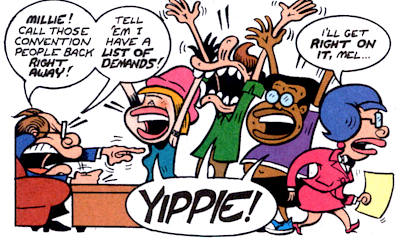 Even Mel’s miserable minions understand how important the comic con is! Art by Peter Bagge.
Even Mel’s miserable minions understand how important the comic con is! Art by Peter Bagge.
Sweatshop is a funny, sometimes hilarious, always exquisite comic book. Bagge’s transition of comic strip humor to a comic book form is masterful. When Sweatshop gets really, really funny, there’s always this beautiful flow to how Bagge gets the joke done. He’s never showy about it, he always gives it good foundation, but he also knows when he’s got a situation he can exploit for some excellent laughs. And it’s not just when Bagge does the art; Gladden does the art on that Mel story from the fourth issue. The whole crew’s great on this book. It’s smart and expert.
Just imagine if DC had been able to sell it. Hopefully Fantagraphics, who has since collected the series in a trade paperback, has some more luck.
 Fantagraphics: For People Who Don’t Need to Go to a Convention to Get Laid. (Art by P. Bagge)
Fantagraphics: For People Who Don’t Need to Go to a Convention to Get Laid. (Art by P. Bagge)
CREDITS
Writer, Peter Bagge; pencillers, Peter Bagge, Stephen DeStefano, Bill Wray, Stephanie Gladden, and Johnny Ryan; inkers, Peter Bagge, DeStefano, Wray, Jim Blanchard, and Ryan; colorist, Joanne Bagge; letterers, Peter Bagge, DeStefano, Wray, and Ryan; editor, Joey Cavalieri; publisher, DC Comics.
Advertisements Share this:- More
